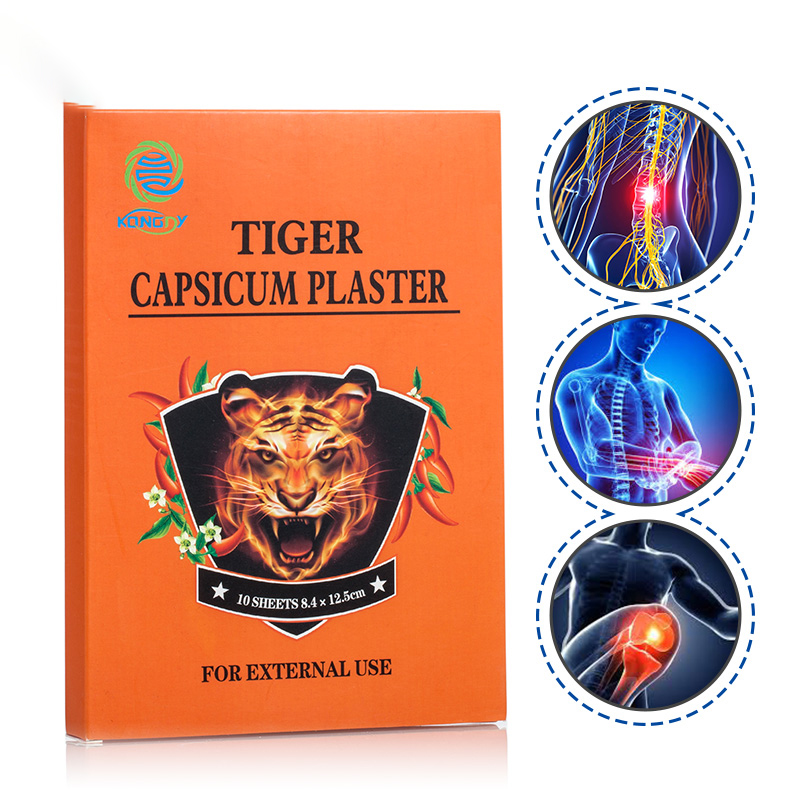Author:Kangdi 15-05-2024
Capsicum plasters, known for their efficacy in pain relief, are popular among consumers dealing with muscular and joint pains. However, like any medical product, they come with inherent risks that could lead to product liability issues. Preventing and controlling these risks is crucial for manufacturers to ensure consumer safety and maintain brand integrity. This article outlines effective strategies for product liability risk prevention and control for capsicum plasters.
01. Understanding Product Liability Risks
Product liability arises when a product is defective and causes harm to the consumer. For capsicum plasters, risks include skin irritation, burns, allergic reactions, and improper use leading to ineffective treatment. These risks can lead to legal actions, financial loss, and reputational damage.
02. Prevention Strategies
1. Rigorous Testing and Quality Control
Comprehensive Testing: Ensure that all capsicum plasters undergo thorough testing during the development phase. This includes dermatological testing to identify potential skin reactions and efficacy tests to confirm the pain-relief claims.
Quality Control: Implement strict quality control measures throughout the manufacturing process. Regular inspections and batch testing can help identify defects early and prevent substandard products from reaching the market.
2. Clear and Detailed Labeling
Usage Instructions: Provide clear, step-by-step instructions on how to use the plasters correctly. Include information on application areas, duration of use, and frequency.
Warnings and Precautions: Highlight any potential side effects, such as skin irritation or allergic reactions. Advise users to perform a patch test before full application and include warnings for individuals with sensitive skin or certain medical conditions.
Ingredients List: List all ingredients clearly to inform consumers with allergies or sensitivities. Transparency in ingredients can also build trust with health-conscious customers.
3. Research and Development
Continuous Improvement: Invest in ongoing research and development to improve the safety and efficacy of the capsicum plasters. Stay updated with the latest scientific advancements and incorporate safer, more effective ingredients and technologies.
Feedback Incorporation: Regularly gather and analyze customer feedback to identify any recurring issues. Use this information to make necessary product adjustments and improvements.
03. Control Strategies
1. Comprehensive Insurance Coverage
Liability Insurance: Secure comprehensive product liability insurance to protect against financial losses resulting from lawsuits. This ensures that the company can cover legal fees and compensation claims without severe financial strain.
Regular Reviews: Periodically review insurance policies to ensure adequate coverage as the product line evolves and market conditions change.
2. Effective Communication Channels
Customer Support: Establish robust customer support channels to address consumer concerns promptly. Providing clear, accessible ways for customers to report issues can help mitigate potential problems before they escalate.
Educational Resources: Develop educational materials, such as videos and FAQs, to guide consumers on the proper use of capsicum plasters and address common concerns.
3. Compliance with Regulations
Adherence to Standards: Ensure that all capsicum plasters comply with local and international safety standards and regulations. Regularly audit manufacturing processes to maintain compliance and stay updated with any regulatory changes.
Documentation: Maintain comprehensive documentation of all testing, quality control measures, and compliance efforts. This can be crucial evidence in defending against liability claims.
04. Conclusion
Preventing and controlling product liability risks for capsicum plasters requires a multifaceted approach, combining rigorous testing, clear labeling, ongoing R&D, comprehensive insurance, effective communication, and regulatory compliance. By implementing these strategies, manufacturers can protect consumers, minimize legal risks, and enhance their brand reputation. Prioritizing safety and transparency not only helps in preventing liability issues but also fosters consumer trust and loyalty, ultimately contributing to the long-term success of the product and the company.
 0086 19937104978
0086 19937104978





